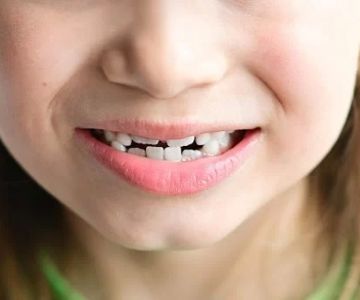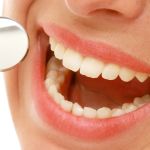
- what-is-dental-erosion-and-why-it-matters
- recognizing-the-early-signs-of-dental-erosion
- real-experiences-and-consequences-of-enamel-loss
- what-you-can-do-to-prevent-or-reverse-the-damage
- where-to-find-expert-care-and-trusted-products
1. What Is Dental Erosion and Why It Matters
1.1 Understanding Enamel Loss
Dental erosion is the progressive loss of the enamel—the outermost layer of the tooth—due to acidic attacks. Unlike cavities caused by bacteria, erosion is chemical and irreversible. Once enamel is gone, it doesn't regenerate, making early detection critical for long-term oral health.
1.2 Common Triggers of Acid Erosion
Acidic foods and beverages like citrus fruits, sodas, wine, and energy drinks are primary culprits. Acid reflux, frequent vomiting, or dry mouth conditions also contribute to enamel breakdown over time. Even brushing too hard right after consuming acidic substances can accelerate the damage.
2. Recognizing the Early Signs of Dental Erosion
2.1 Increased Tooth Sensitivity
If hot or cold foods suddenly start making you wince, this might be your first warning sign. As enamel thins, the underlying dentin layer becomes exposed, heightening tooth sensitivity.
2.2 Changes in Tooth Appearance
Look for a glassy or shiny surface on your teeth—particularly the biting edges—or areas that appear more yellow (from exposed dentin). Teeth may also start looking shorter or more translucent at the edges.
2.3 Surface Indentations and Flattening
Dental erosion can lead to small dips or rounded impressions on the chewing surfaces, especially the molars. Flattened teeth or thinning enamel ridges are classic signs of prolonged acid exposure.
2.4 Cracks and Chips
As enamel weakens, teeth may become more prone to cracking or chipping, especially during chewing hard foods. These cracks can be superficial or eventually evolve into more serious fractures.
3. Real Experiences and Consequences of Enamel Loss
3.1 Michelle’s Wake-Up Call
Michelle, a 33-year-old yoga instructor, thought her morning lemon water was a healthy ritual—until she noticed her front teeth felt rough and sensitive. A visit to her dentist revealed advanced signs of dental erosion caused by daily acid exposure without protective measures.
3.2 James’s Soda Habit
James, a college student, relied heavily on energy drinks during finals. He began experiencing noticeable yellowing and sensitivity. His dentist recommended dietary changes and fluoride treatments to stabilize the enamel erosion before it worsened.
4. What You Can Do to Prevent or Reverse the Damage
4.1 Modify Your Diet
Cutting down on acidic foods and beverages is the first line of defense. When you do consume them, try using a straw to minimize contact with your teeth, and rinse your mouth with water afterward rather than brushing immediately.
4.2 Use Enamel-Strengthening Products
Fluoride toothpaste and enamel-repair mouthwashes can help strengthen remaining enamel and reduce sensitivity. Products with stannous fluoride or calcium phosphates are particularly beneficial.
4.3 Gentle Brushing and Proper Timing
Wait at least 30 minutes after consuming acidic foods before brushing your teeth. Use a soft-bristled brush and gentle, circular motions to avoid exacerbating enamel wear.
4.4 Regular Dental Visits
Your dentist can spot the early signs of dental erosion before they become visibly or physically problematic. Professional cleanings and remineralizing treatments can significantly reduce progression risks.
5. Where to Find Expert Care and Trusted Products
5.1 Personalized Help from Dentistry Toothtruth
If you’re seeing any signs of dental erosion or simply want to protect your enamel proactively, Dentistry Toothtruth offers tailored advice, curated oral care products, and access to professionals who truly understand enamel health.
5.2 Invest in Prevention Today
Enamel loss isn’t reversible, but it’s absolutely preventable. With the right knowledge, lifestyle changes, and support from trusted resources like Dentistry Toothtruth, you can maintain strong, healthy teeth well into the future.







 Towning Dental4.0 (36 review)
Towning Dental4.0 (36 review) Millennium Dental Arts5.0 (235 review)
Millennium Dental Arts5.0 (235 review) Fullerton Dental Care4.0 (59 review)
Fullerton Dental Care4.0 (59 review) Joseph Spina III, DMD4.0 (40 review)
Joseph Spina III, DMD4.0 (40 review) Dental Office0.0 (0 review)
Dental Office0.0 (0 review) Blessed Smile Dentistry of Yorba Linda4.0 (42 review)
Blessed Smile Dentistry of Yorba Linda4.0 (42 review) The Importance of Oral Health Education During Pregnancy for a Healthy Pregnancy
The Importance of Oral Health Education During Pregnancy for a Healthy Pregnancy Best Tips for Brushing Your Teeth Properly for Healthy Gums: Essential Techniques for Oral Health
Best Tips for Brushing Your Teeth Properly for Healthy Gums: Essential Techniques for Oral Health Why Skipping Dental Checkups Can Lead to Bigger Oral Health Problems
Why Skipping Dental Checkups Can Lead to Bigger Oral Health Problems Advantages of Porcelain Dental Restorations
Advantages of Porcelain Dental Restorations How Can Diabetes Cause Tooth and Gum Problems? Preventing and Managing Oral Health Issues
How Can Diabetes Cause Tooth and Gum Problems? Preventing and Managing Oral Health Issues Healthy Habits for Promoting Good Oral Health and Hygiene: Tips for a Healthy Smile
Healthy Habits for Promoting Good Oral Health and Hygiene: Tips for a Healthy Smile